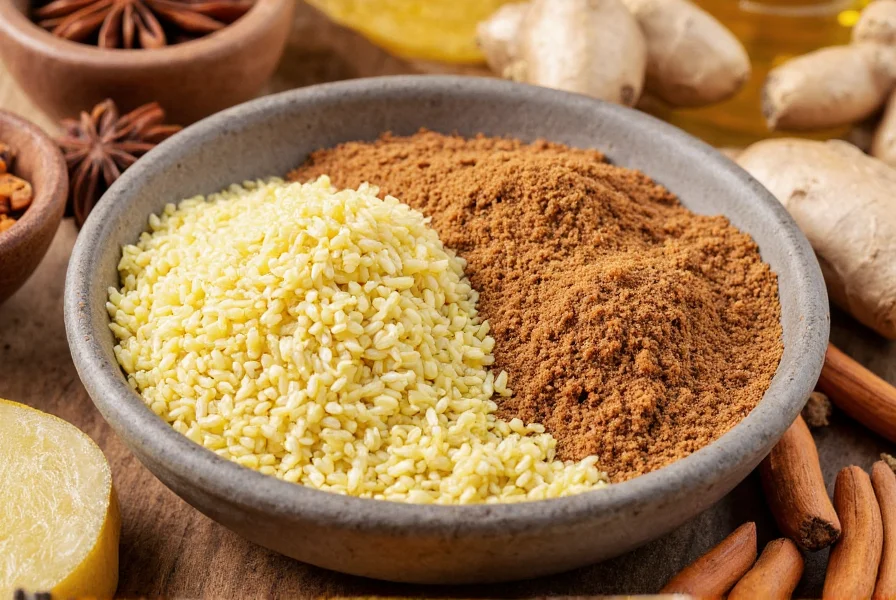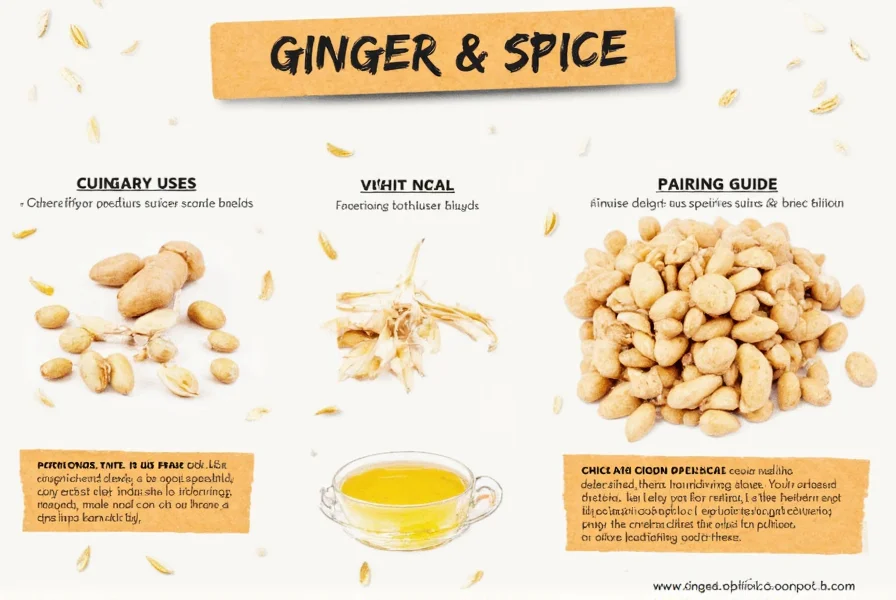Understanding how to maximize ginger's potential in your kitchen begins with recognizing its dual nature as both a fresh ingredient and dried spice. Fresh ginger root contains gingerol, the compound responsible for its characteristic heat and many health benefits of fresh ginger root, while dried ginger powder develops zingerone during processing, yielding a warmer, less intense flavor profile perfect for baking and spice blends.
The Botanical Profile of Ginger
Zingiber officinale, commonly known as ginger, grows horizontally beneath the soil as a rhizome rather than a true root. Mature ginger rhizomes feature light brown skin with a fibrous texture and pale yellow interior. The plant requires tropical conditions to thrive, explaining why India, China, and Nigeria dominate global production. When selecting fresh ginger, look for firm, smooth-skinned pieces with minimal wrinkles—these indicate peak freshness and optimal ginger spice storage methods.

Culinary Applications Across Global Cuisines
Ginger's versatility shines through diverse culinary traditions. In Asian cooking, fresh ginger forms the aromatic foundation of stir-fries and soups, often paired with garlic and scallions. Japanese cuisine features pickled ginger (gari) as a palate cleanser with sushi, while Indian recipes incorporate both fresh and dried ginger in spice mixes like garam masala. Caribbean jerk seasoning relies on fresh ginger's heat to complement allspice and Scotch bonnet peppers.
| Cuisine | Primary Ginger Form | Signature Dishes |
|---|---|---|
| Chinese | Fresh, minced | Stir-fries, hot and sour soup |
| Indian | Fresh and dried powder | Curries, chai tea, pickles |
| Middle Eastern | Dried powder | Spice blends, baked goods |
| Caribbean | Fresh, grated | Jerk seasoning, ginger beer |
Health Benefits Supported by Research
Numerous studies validate traditional uses of ginger for digestive health. Research published in the Journal of Gastroenterology confirms ginger's effectiveness in reducing nausea and accelerating gastric emptying. The anti-inflammatory properties of ginger make it valuable for managing osteoarthritis symptoms, with clinical trials showing significant pain reduction compared to placebo. When exploring how to use ginger in cooking for health benefits, note that raw ginger preserves more active compounds than cooked versions.
Optimal Pairings: Ginger and Complementary Spices
Mastering spice combinations elevates your cooking. The best spices to pair with ginger include:
- Lemongrass - creates bright, citrusy profiles in Thai and Vietnamese dishes
- Garlic - forms the essential base for countless Asian sauces and marinades
- Turmeric - combines with ginger for potent anti-inflammatory effects
- Cinnamon - balances ginger's heat in baked goods and chai blends
- Cardamom - enhances ginger's warmth in Middle Eastern and Scandinavian recipes
Understanding ginger varieties for different cuisines helps select appropriate forms. Young ginger (spring ginger) has thin skin and mild flavor ideal for pickling, while mature ginger offers more intense heat perfect for robust curries. African ginger typically delivers stronger heat than Chinese varieties, making it preferable for ginger beer and medicinal preparations.

Practical Kitchen Applications
Transform your cooking with these ginger techniques:
- Grating - Freeze ginger first for easier grating without fibrous strands
- Infusing - Simmer sliced ginger in liquids for soups, teas, or poaching liquids
- Preserving - Create crystallized ginger by simmering in sugar syrup
- Substituting - Use 1/4 teaspoon dried ginger powder for each tablespoon of fresh
When comparing fresh ginger vs dried ginger powder, remember that dried ginger offers more concentrated flavor but lacks the bright, citrusy notes of fresh. For traditional uses of ginger in Asian cuisine, always add fresh ginger early in cooking to mellow its heat, while dried ginger works best added later to preserve its flavor.
Storage and Preservation Methods
Extend ginger's shelf life with proper storage. Keep unpeeled fresh ginger in a paper bag in the vegetable crisper for up to three weeks. For longer storage, freeze whole pieces and grate directly from frozen. Dried ginger powder maintains potency for six months when stored in an airtight container away from light. When implementing ginger spice storage methods, avoid refrigeration for dried spices as moisture degrades quality.
Frequently Asked Questions
What's the difference between fresh ginger and dried ginger powder?
Fresh ginger contains gingerol, providing sharp, citrusy heat ideal for savory dishes. Dried ginger powder develops zingerone during processing, yielding a warmer, earthier flavor better suited for baking. Use 1/4 teaspoon dried ginger to replace one tablespoon fresh.
Which spices complement ginger best in cooking?
The best spices to pair with ginger include garlic (essential for Asian cuisine), lemongrass (creates bright profiles), turmeric (enhances anti-inflammatory properties), and cinnamon (balances heat in baked goods). Cardamom also complements ginger's warmth in Middle Eastern and Scandinavian recipes.
How can I maximize the health benefits of ginger?
For maximum health benefits of fresh ginger root, consume it raw in smoothies or freshly grated into dressings. Studies show raw ginger preserves more active compounds. A daily intake of 1-3 grams (about 1/2 to 1.5 teaspoons grated) provides digestive and anti-inflammatory benefits without adverse effects for most people.
What are the best ginger varieties for different cuisines?
Young ginger works best for pickling and delicate dishes due to its thin skin and mild flavor. Mature ginger provides stronger heat ideal for Indian curries and Caribbean jerk seasoning. African ginger delivers intense heat preferred for ginger beer, while Chinese varieties offer more balanced flavor for general cooking. Understanding ginger varieties for different cuisines ensures authentic results.
How should I store ginger to maintain freshness?
Store unpeeled fresh ginger in a paper bag in the vegetable crisper for up to three weeks. Freeze whole pieces for longer storage—grate directly from frozen when needed. Dried ginger powder maintains potency for six months in an airtight container away from light. Never refrigerate dried spices as moisture degrades quality. Proper ginger spice storage methods significantly extend usability.











 浙公网安备
33010002000092号
浙公网安备
33010002000092号 浙B2-20120091-4
浙B2-20120091-4